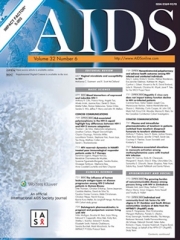Posted on June 19, 2017
Source: AIDS An Official International AIDS Society journal

El-Diwany, Ramy; Breitwieser, Florian P.; Soliman, Mary; Skaist, Alyza M.; Srikrishna, Geetha; Blankson, Joel N.; Ray, Stuart C.; Wheelan, Sarah J.; Thomas, David L.; Balagopal, Ashwin
Objective: To assess if the reduction in HIV-1 RNA in CD4+ T cells is correlated with the persistence of immune activation following early antiretroviral therapy (ART).
Design: Clinical trial (NCT01285050).
Methods: Next-generation sequencing was used to study total RNA from activated CD4+ T cells (CD38 and human leukocyte antigen - antigen D related (HLA-DR) expressing) collected from 19 treatment-naïve HIV-1/hepatitis C virus-infected patients before and early after ART initiation (≥12 weeks after plasma HIV-1 RNA <50 copies/ml). To validate comparisons, pre and post-ART measures were adjusted for input RNA and overall read number.
Results: As expected, ART use was associated with a median [interquartile range (IQR)] 4.3% (2.2–8.3) reduction in the proportion of activated CD4+ T cells (P = 0.0008). Whereas in those activated CD4+ T cells no consistent differences in overall gene expression were detected, interferon-stimulated gene expression declined (P < 2 × 10−16). Pre-ART, sorted activated CD4+ T cells contained a median (IQR) of 959 (252–1614) HIV-1 reads/107 reads compared with 72 (55–152) HIV-1 reads/107 reads after at least 12 weeks of suppressive ART (P = 8 × 10−5). The decrease in HIV-1 reads in activated CD4+ T cells was associated with the change in plasma HIV-1 RNA levels (r = 0.77, P = 2 × 10−4) and the change in the proportion of activated CD4+ T cells (r = 0.70, P = 0.0016).
Conclusion: Months of ART led to a marked decrease in cell-associated HIV-1 RNA and interferon-stimulated genes expression in activated CD4+ T cells that were strongly associated with the reduction in the proportion of activated CD4+ T cells.